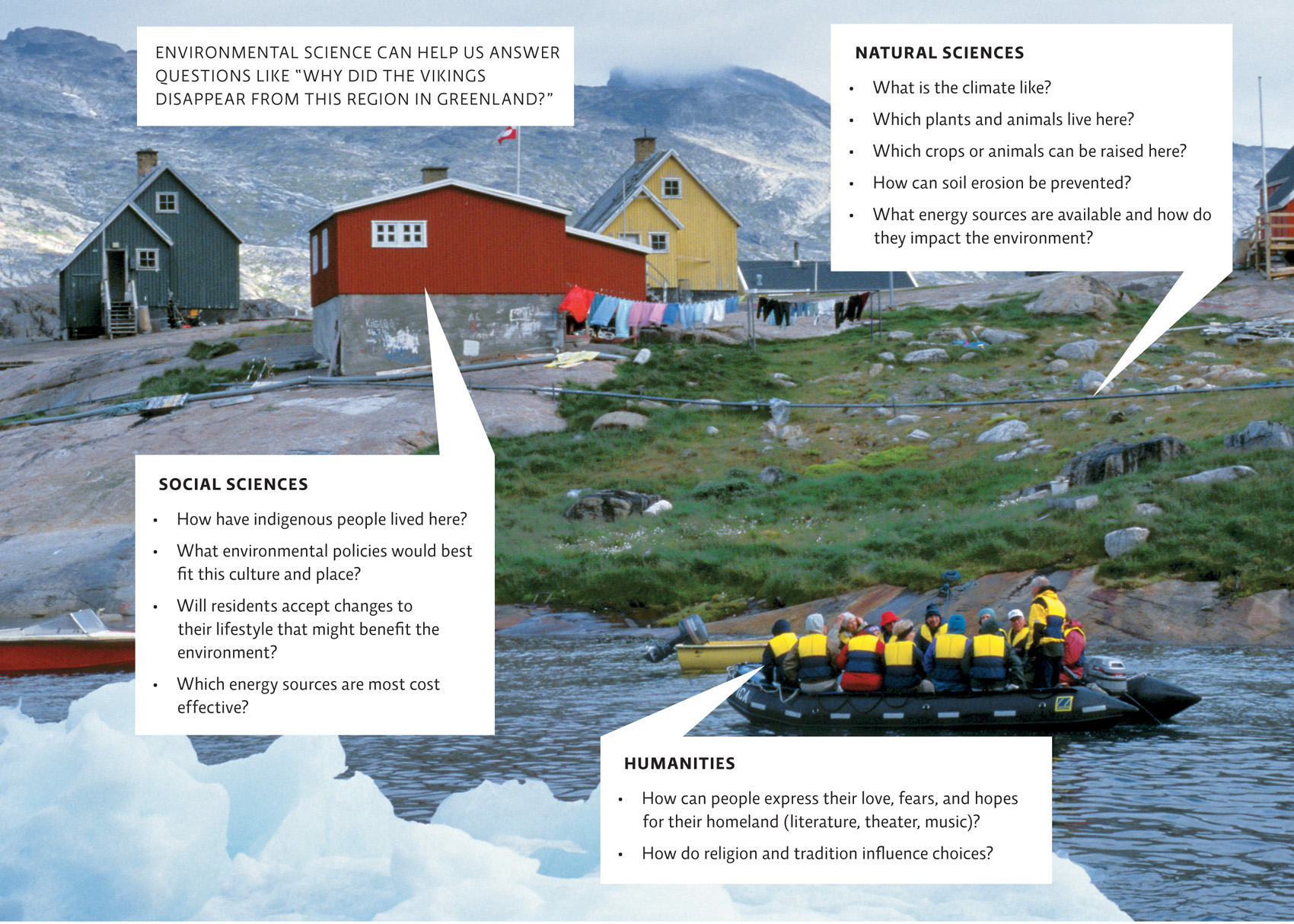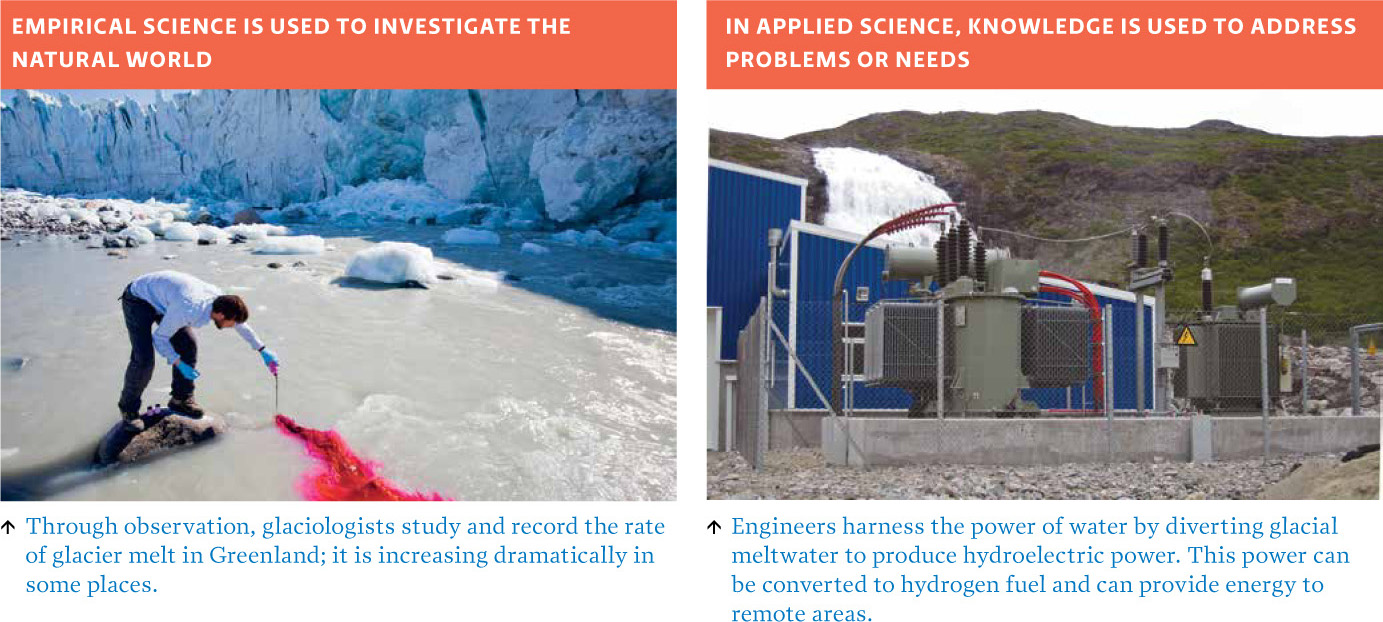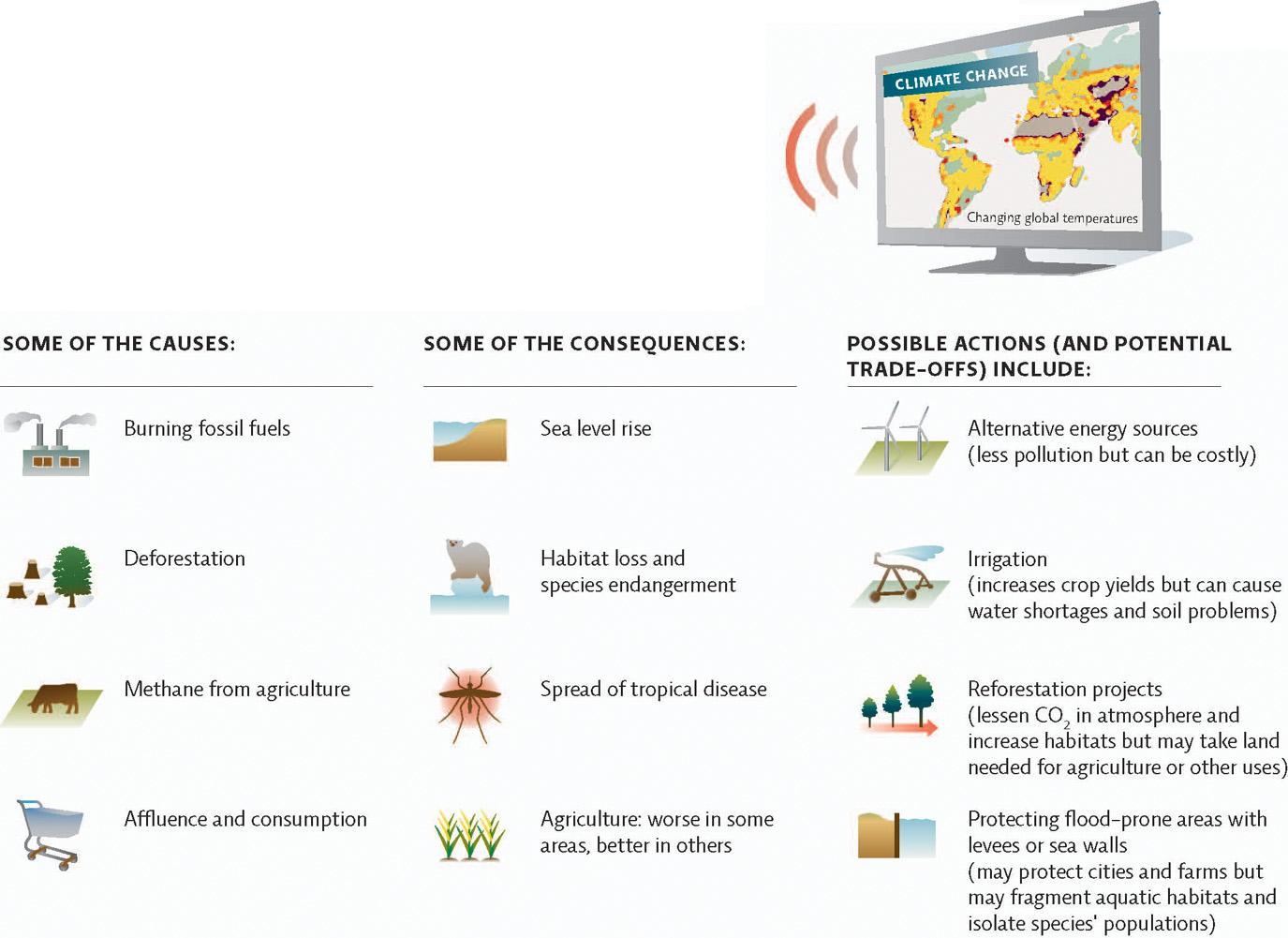1.2 Environmental science is all encompassing.
For a modern developed society like Canada, it can be difficult to imagine a time and place when the natural world held such sway over our fate. Our food comes from a grocery store, our water from a tap; even our air is artificially heated and cooled to our liking. These days, it seems more logical to consider societal conflict, or even collapse, through the lens of politics or economics. But, as we will see time and again throughout this book, the natural environment—and how we interact with it—plays a leading role in the sagas that shape human history; this is as true today as it was in the time of the Vikings.
3
Environment is a broad term that describes the surroundings or conditions (including living and nonliving components) in which any given organism exists. Environmental science—a field of research that is used to understand the natural world and our relationship to it—is extremely interdisciplinary. It relies on a range of natural and applied sciences (such as ecology, geology, chemistry, and engineering) to unlock the mysteries of the natural world, and to look at the role and impact of humans in the world. It also draws on social sciences (such as anthropology, psychology, and economics) and the humanities (such as art, literature, and music) to understand the ways that humans interact with, and thus impact, the ecosystems around them. [infographic 1.1]

4
Environmental science is an empirical science: it scientifically investigates the natural world through systematic observation and experimentation. It is also an applied science: we use its findings to inform our actions and, in the best cases, to bring about positive change. [infographic 1.2]

The ability to understand environmental problems is referred to as environmental literacy. Such literacy is crucial to helping us become better stewards of Earth. Environmental problems can be extremely complicated and tend to have multiple causes, each one difficult to address. We must also understand that because of their complexity, any given response to an environmental problem involves significant trade-offs and no one response is likely to present the ultimate solution. Scientists refer to such problems as “wicked problems.” In confronting them, we must consider not only their environmental but also their economic and social causes and consequences. Scientists refer to this trifecta as the triple bottom line. [infographic 1.3]

In his book Collapse, University of California at Los Angeles biologist Jared Diamond details how wicked problems can lead to a society’s ultimate demise. He identifies five factors in particular that determine whether any given society will succeed or fail: natural climate change; failure to properly respond to environmental changes; self-inflicted environmental damage; hostile neighbours; and loss of friendly neighbours. According to Diamond, the relative impact of each factor varies by society.
The situation of the Greenland Vikings was a rare case. It turns out that, like a perfect storm, all five of these factors conspired together.